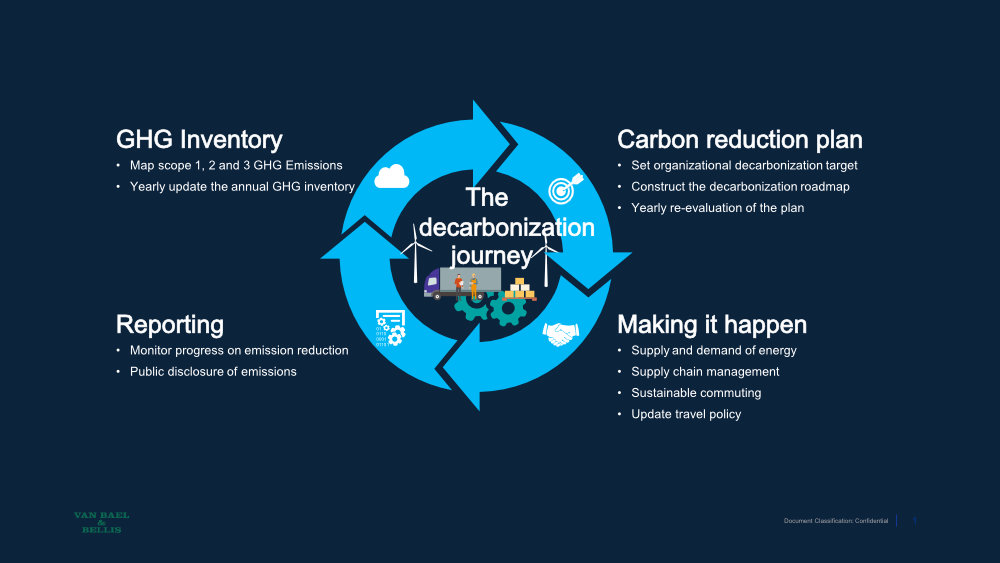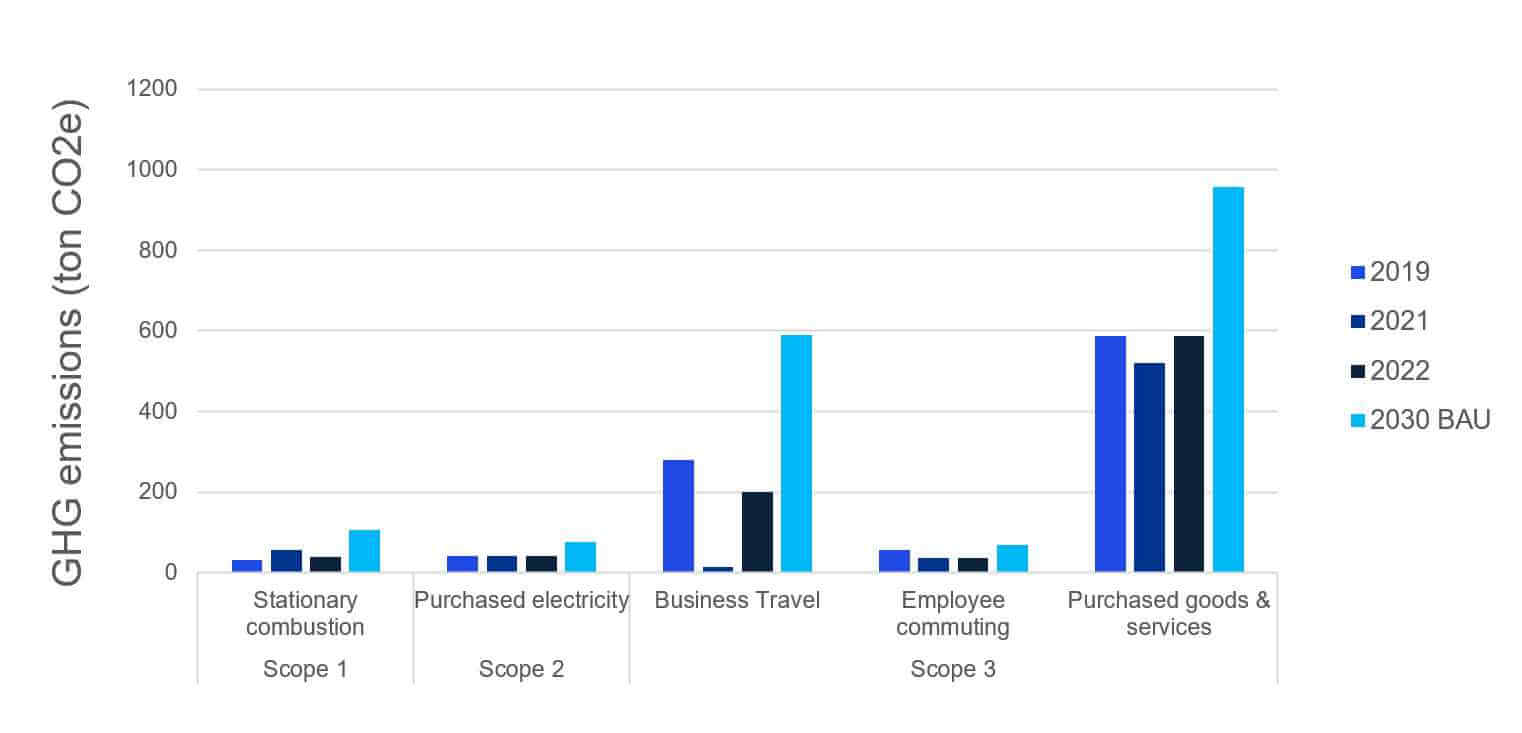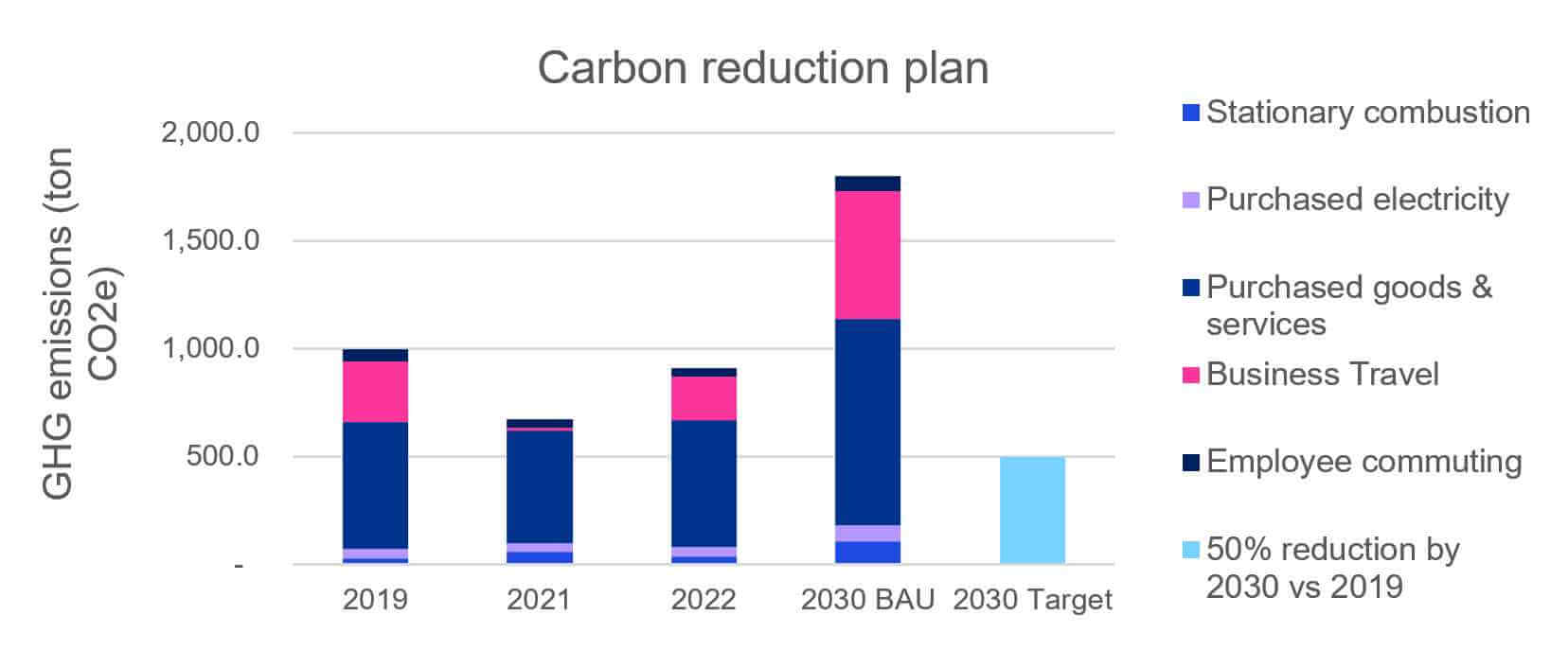Van Bael & Bellis commits to a 50% reduction of its carbon emissions by 2030.
Background
In our journey to net-zero, VBB and its team of experts have established an ambitious carbon reduction target for our firmwide operations.
We remain committed to supporting our team and clients during our common journey towards a more sustainable future.
Our most recent carbon reduction plan (published in April 2025) is available here.
Our Firm’s approach
We follow the GHG Protocol Corporate Standard, developed by the World Business Council for Sustainable Development (WBCSD) and World Resources Institute (WRI). This standard describes how to track emissions for the six greenhouse gases (Carbon dioxide (CO2), Methane (CH4), Nitrous Oxide (N2O), Hydrofluorocarbons (HFCs), Perfluorocarbons (PFCs), and Sulphur Hexafluoride (SF6)).
Our emission sources are categorized into 3 scopes:
Scope 1: Direct GHG emissions from sources VBB owns or controls, including on-site stationary fuel combustion, heating or cooling equipment.
Scope 2: Indirect GHG emissions from purchased energy that are emitted by a third party that is consumed by VBB.
Scope 3: Indirect emissions related to the activities of the company, but occurring from sources not controlled by the company (such as within the supply chain due to activities of suppliers or clients, air travel, business travel in personal vehicles, rail travel, etc.)
Our decarbonisation journey

To understand our baseline, we first calculate existing greenhouse gas emissions. Our carbon reduction plan is drafted by setting organisational decarbonisation targets and creating a roadmap to attain this. Next, we implement the actions on this roadmap, while continuously monitoring progress. The first two phases of the decarbonisation roadmap were tackled in the fourth quarter of 2022.
VBB Emission inventory
The Greenhouse Gas Emissions inventory was first calculated in Quarter 4 of 2022. To get a fair representation of base year emissions, we have assessed the situation before the COVID pandemic by calculating emissions for 2019:
In 2019, a total of 999,5 tons CO2e was emitted, of which scope 3 emissions represented 92,6%% (926,44 ton CO2e).
In 2021, total emissions across the value chain were reduced by 33% to 672,5 tons CO2e, mainly due to reduced business travel as consequence of the COVID-19 pandemic.
Detailed information of emissions per emission category is available below. This graph illustrates that the bulk of the emissions are related to purchased goods & services; with emissions related to business travel as second most important category. Emissions related to stationary combustion (heating of facilities), purchased electricity, and commuting of employees are comparable in size. Other scope 3 categories were assessed and evaluated as not material.

Our Carbon Reduction Plan
The carbon reduction plan of Van Bael & Bellis consists of 2 parts:
- The carbon reduction target.
- The roadmap to realise the carbon reduction target.
Van Bael & Bellis commits to reducing scope 1, 2 and 3 emissions with 50% by 2030 from a 2019 base year. This emission target is aligned with the SBTi 1,5°C pathway.
The visual presented below illustrates the 2019 base year emissions for 2021 and 2022, as well as the 2030 business-as-usual scenario and 2030 target. To achieve the carbon reduction target, VBB is discussing the transition towards renewable energy sources in its leased offices in collaboration with the building owners. Furthermore, VBB investigates how to decrease the consumption of high-carbon products and services, stimulate sustainable modes of transport for employee commuting and update the travel policy to reduce emissions related to business travel. These measures will enable VBB to achieve its carbon reduction targets by 2030. In addition, we will regularly update our carbon inventory and re-evaluate our carbon reduction plan to ensure that we stay on track to achieve our goal by 2030.

What are the Firm’s next steps towards lowered emissions?
We are currently implementing the actions on the roadmap to drive GHG emissions down. With yearly reporting of GHG emissions, we will keep track of our performance and make sure to reach our 2030 target.
Carbon Reduction Plan 2024
Carbon Reduction Plan (Published in 2024)